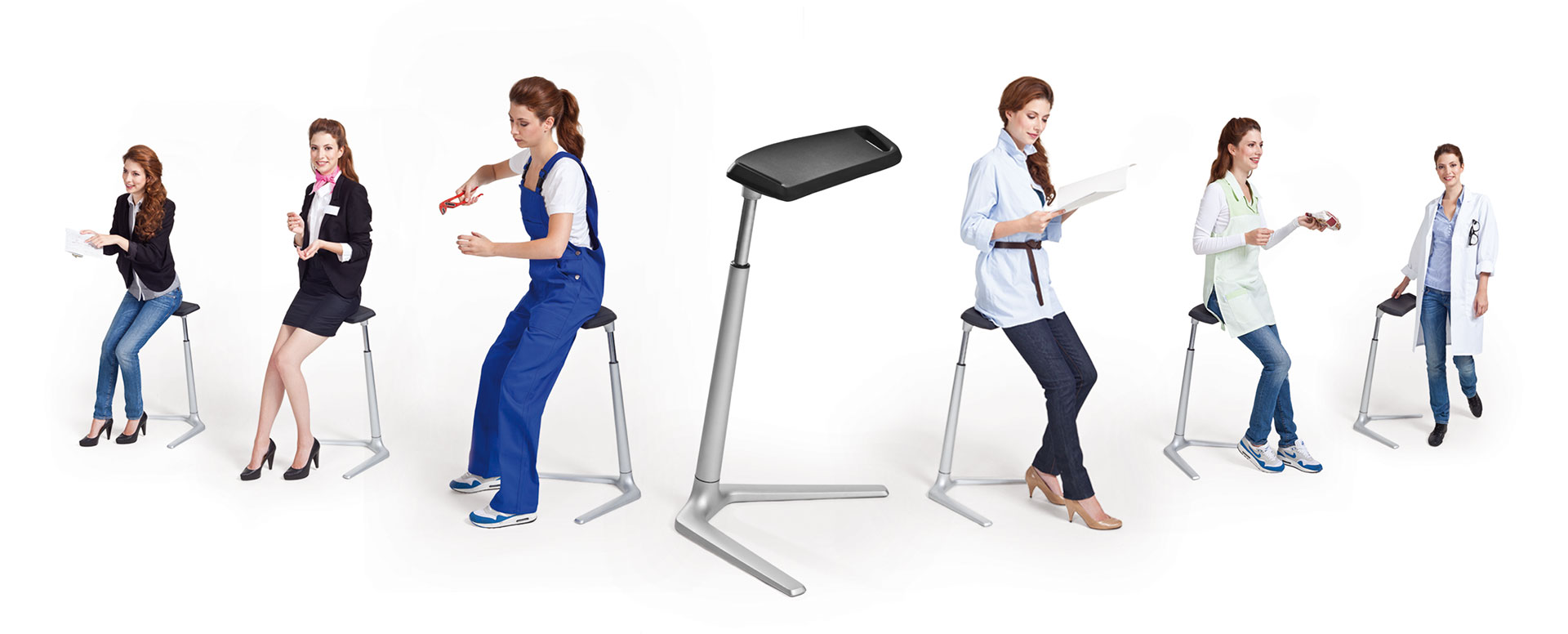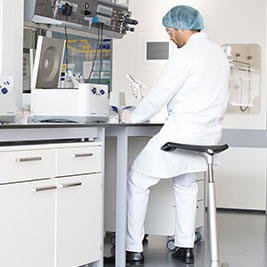
The consequences of permanent standing
Tension, vein problems, back and knee pain have since become everyday stresses for many employees, and can often be traced to long periods spent standing at work.Permanent standing not part of our nature
In retail, at the conveyor belt, in gastronomy or at the hairdressing salon, more than half of all employees in Germany spend several hours a day standing when at work. The human body may be capable of spending several hours standing, however it was not designed for this strain, instead for a mixture of lying down, sitting, standing, walking and all the positions that come between. Spending extended periods of time in one position is unnatural for the human body and causes uneven strain, which can then cause health problems.
Approx. 7,200 litres of blood need to be pumped back to the heart from the veins in the legs on a daily basis. The calf and shin muscles work as pumps when the body moves, supporting the return of blood to the heart. If long periods of time are spent standing up, without any change of position, the vessel walls and venous valves are often put under such strain that venous disorders can almost be expected. When standing, our muscles and joints stiffen and, together with the skeleton, bear the weight of our entire body. The tendons and ligaments are then used to constantly balance the body in order to maintain an equilibrium.
Health consequences for standing work
If a person stands in the one place for an extended period of time, less blood and thus less oxygen through the muscles, causing everything from painful tension and cramps to aching muscles. And it's not just the muscles, the joint capsules also become brittle and liable to wear due to a reduced flow of joint fluid. The intervertebral discs are also adversely affected by constant standing. As they don't have their own supply of blood, these discs take the nutrients they need from the surrounding tissue. In order for this exchange to take place, the disc needs to be tensed and released regularly in order to completely soak up the nutrients like a sponge or release fluid when under pressure.
Sitting, standing, walking and lying down - It's all in the mix!
Changing position between sitting, standing, walking and lying down keeps the spine elastic and rhythmic, preventing nerve dysfunctions, lumbago or even a slipped disc. There is actually plenty to be said for "being kept on your toes". Viewed from the side, a healthy foot is like an elasticated arch, cushioning our weight while we're on the move. When standing, our weight is not supported by the entire surface of our foot, but spread across the heel and balls thanks to the arch. This arch is stretched on the underside of the foot with muscles, tendons and ligaments, which in turn require movement to prevent fatigue, shortening or wearing out. If the suspension in the feet is lost, every step becomes torture and the knee, hips and spine suffer, becoming seriously damaged.
It is thus clear: people need to keep moving in order to keep the body in sync and to prevent illnesses of the cardiovascular system and the musculoskeletal system. The most important rule to follow to ensure good health is to constantly change position: movement combined with sitting, standing and lying down. However, as there are not many standing workstations that allow for "flexible" relief, standing aids opportunity to ease the strain on the body when standing up.

3

0
back to overview
 print
print
